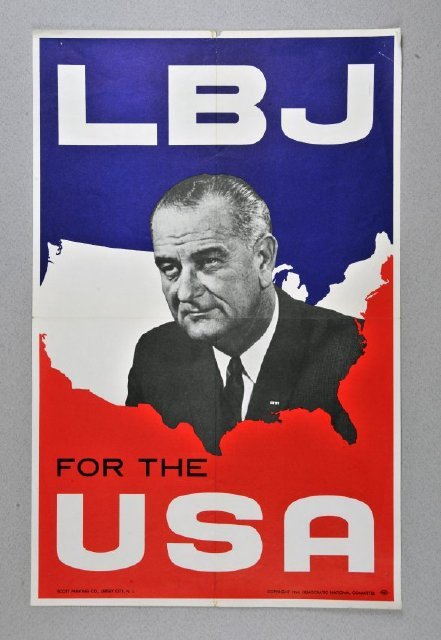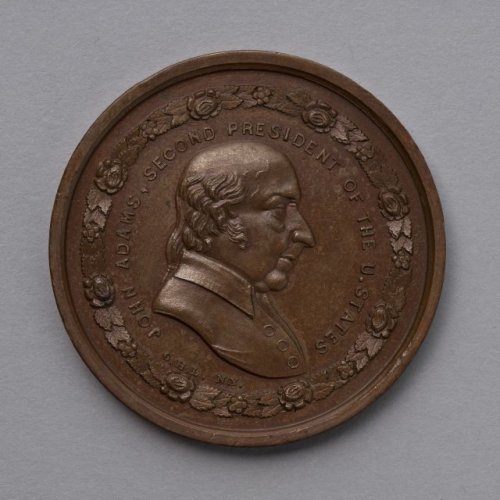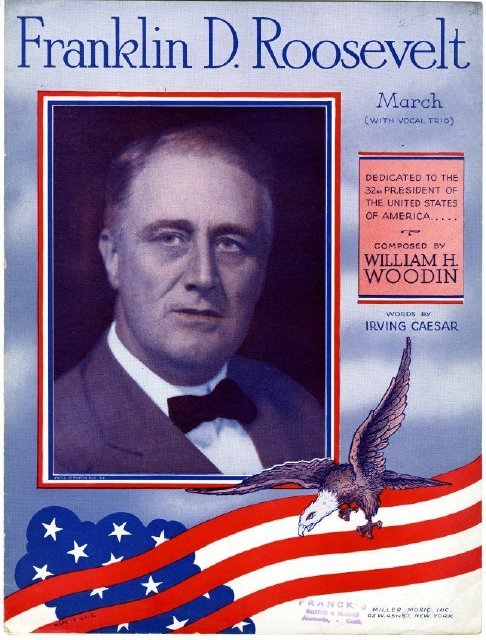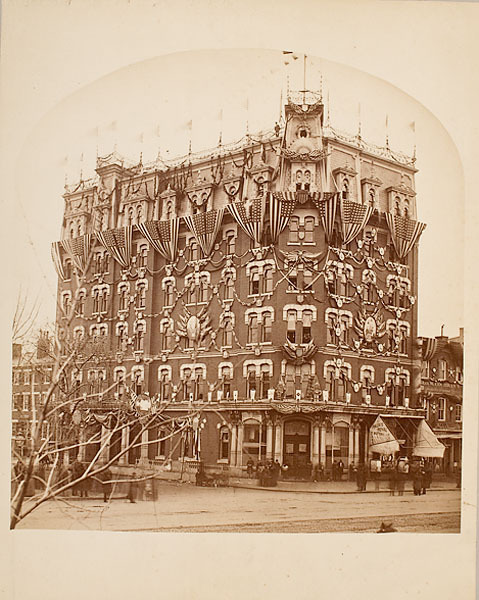#presidential history
January 4, 1965 - L.B.J. envisions a Great Society in his State of the Union address
“On January 4, 1965, in his State of the Union address, President Lyndon Baines Johnson lays out for Congress a laundry list of legislation needed to achieve his plan for a Great Society. On the heels of John F. Kennedy’s tragic death, Americans had elected Johnson, his vice president, to the presidency by the largest popular vote in the nation’s history. Johnson used this mandate to push for improvements he believed would better Americans’ quality of life.
Following Johnson’s lead, Congress enacted sweeping legislation in the areas of civil rights, health care, education and the environment. The 1965 State of the Union address heralded the creation of Medicare/Medicaid, Head Start, the Voting Rights Act, the Civil Rights Act, the Department of Housing and Urban Development and the White House Conference on Natural Beauty. Johnson also signed the National Foundation of the Arts and Humanities Act, out of which emerged the National Endowment for the Arts and the National Endowment for the Humanities. Through the Economic Opportunity Act, Johnson fought a War on Poverty by implementing improvements in early childhood education and fair employment policies. He was also a strong advocate for conservation, proposing the creation of a green legacy through preserving natural areas, open spaces and shorelines and building more urban parks. In addition, Johnson stepped up research and legislation regarding air- and water-pollution control measures.
Under Kennedy, then-Vice President Johnson led the government’s quest to develop American excellence in the sciences. As president, the ongoing technology race with the Soviet Union spurred Johnson to continue the vigorous national program of space exploration begun by Kennedy. During Johnson’s presidency, the National Air and Space Administration (NASA) achieved the extraordinary and unprecedented accomplishment of orbiting a man around the moon.
Though many of Johnson’s programs remain in place today, his legacy of a Great Society has been largely overshadowed by his decision to involve greater numbers of American soldiers in the controversial Vietnam War.”
Other events in history this week:
January 3, 1959 - Alaska becomes 49th state
January 4, 1896 - Utah enters the Union
January 5, 1933 - Golden Gate Bridge is born
January 6, 1938 - Samuel Morse demonstrates the telegraph
January 7, 1789 - First United States presidential election
January 8, 1815 - The Battle of New Orleans
January 9, 1768 - First modern circus is staged
Thispolitical poster for Lyndon B. Johnson can be found in the online collection of the Kentucky Historical Society.
Post link
June 3, 1800 - President John Adams moves into tavern in Washington D.C.
“John Adams, the second president of the United States, becomes the first president to reside in Washington, D.C., when he takes up residence at Union Tavern in Georgetown.
The city of Washington was created to serve as the nation’s capital because of its geographical position in the center of the existing new republic. The states of Maryland and Virginia ceded land around the Potomac River to form the District of Columbia, and work began on Washington in 1791. French architect Pierre Charles L'Enfant designed the city’s radical layout, full of dozens of circles, crisscross avenues, and plentiful parks. In 1792, work began on the neoclassical White House building at 1600 Pennsylvania Avenue under the guidance of Irish-American architect James Hoban, whose White House design was influenced by Leinster House in Dublin and by a building sketch in James Gibbs’ Book of Architecture. In the next year, Benjamin Latrobe began construction on the other principal government building, the U.S. Capitol.
On June 3, 1800, President Adams moved to a temporary residence in the new capital as construction was completed on the executive mansion. On November 1, the president was welcomed into the White House. The next day, Adams wrote to his wife about their new home: “I pray heaven to bestow the best of blessings on this house, and on all that shall hereafter inhabit it. May none but wise men ever rule under this roof!” Soon after, Abigail Adams arrived at the White House, and on November 17 the U.S. Congress convened for the first time at the U.S. Capitol.
During the War of 1812, both buildings were set on fire in 1814 by British soldiers in retaliation for the burning of government buildings in Canada by U.S. troops. Although a torrential downpour saved the still uncompleted Capitol building, the White House was burned to the ground. The mansion was subsequently rebuilt and enlarged under the direction of James Hoban, who added east and west terraces to the main building along with a semicircular south portico and a colonnaded north portico. Work was completed on the White House in the 1820s and it has remained largely unchanged since.”
This week in History:
May 31, 1859 - Big Ben rings out over London for the first time
June 1, 1779 - Benedict Arnold court-martialed
June 2, 1935 - Babe Ruth retires
June 3, 1965 - Major Edward H. White II becomes first American to walk in space
June 4, 1919 - Congress passes 19th Amendment, giving women the right to vote
June 5, 1933 - FDR takes United States off gold standard
June 6, 1944 - D-Day
This medal showing the profile of President John Adams can be found in the online collection of the American Philosophical Society.
Post link
March 4, 1933: FDR inaugurated
“On March 4, 1933, at the height of the Great Depression, Franklin Delano Roosevelt is inaugurated as the 32nd president of the United States. In his famous inaugural address, delivered outside the east wing of the U.S. Capitol, Roosevelt outlined his “New Deal”–an expansion of the federal government as an instrument of employment opportunity and welfare–and told Americans that “the only thing we have to fear is fear itself.” Although it was a rainy day in Washington, and gusts of rain blew over Roosevelt as he spoke, he delivered a speech that radiated optimism and competence, and a broad majority of Americans united behind their new president and his radical economic proposals to lead the nation out of the Great Depression.
Born into an upper-class family in Hyde Park, New York, in 1882, Roosevelt was the fifth cousin of Theodore Roosevelt, who served as the 26th U.S. president from 1901 to 1909. In 1905, Franklin Roosevelt, who was at the time a student at Columbia University Law School, married Anna Eleanor Roosevelt, the niece of Theodore Roosevelt. After three years as a lawyer, he decided to follow his cousin Theodore’s lead and sought public office, winning election to the New York State Senate in 1910 as a Democrat. He soon won a reputation as a charismatic politician dedicated to social and economic reform.
Roosevelt supported the progressive New Jersey governor Woodrow Wilson in his bid for the Democratic presidential nomination, and after Wilson’s election in 1912 Roosevelt was appointed assistant secretary of the U.S. Navy, a post that Theodore Roosevelt once held. In 1920, Roosevelt, who had proved himself a gifted administrator, won the Democratic nomination for vice president on a ticket with James Cox. The Democrats lost in a landslide to Republicans Warren Harding and Calvin Coolidge, and Roosevelt returned to his law practice and undertook several business ventures.
In 1921, he was stricken with poliomyelitis, the virus that causes the crippling disease of polio. He spent several years recovering from what was at first nearly total paralysis, and his wife, Eleanor, kept his name alive in Democratic circles. He never fully recovered and was forced to use braces or a wheelchair to move around for the rest of his life.
In 1924, Roosevelt returned to politics when he nominated New York Governor Alfred E. Smith for the presidency with a rousing speech at the Democratic National Convention. In 1928, he again nominated Smith, and the outgoing New York governor urged Roosevelt to run for his gubernatorial seat. Roosevelt campaigned across the state by automobile and was elected even as the state voted for Republican Herbert Hoover in the presidential election.
As governor, Roosevelt worked for tax relief for farmers and in 1930 won a resounding electoral victory just as the economic recession brought on by the October 1929 stock market crash was turning into a major depression. During his second term, Governor Roosevelt mobilized the state government to play an active role in providing relief and spurring economic recovery. His aggressive approach to the economic crisis, coupled with his obvious political abilities, gave him the Democratic presidential nomination in 1932.
Roosevelt had no trouble defeating President Herbert Hoover, who many blamed for the Depression, and the governor carried all but six states. During the next four months, the economy continued to decline, and when Roosevelt took office on March 4, 1933, most banks were closed, farms were suffering, 13 million workers were unemployed, and industrial production stood at just over half its 1929 level.
Aided by a Democratic Congress, Roosevelt took prompt, decisive action, and most of his New Deal proposals, such as the Agricultural Adjustment Act, National Industrial Recovery Act, and creation of the Public Works Administration and Tennessee Valley Authority, were approved within his first 100 days in office. Although criticized by many in the business community, Roosevelt’s progressive legislation improved America’s economic climate, and in 1936 he easily won reelection.
During his second term, he became increasingly concerned with German and Japanese aggression and so began a long campaign to awaken America from its isolationist slumber. In 1940, with World War II raging in Europe and the Pacific, Roosevelt agreed to run for an unprecedented third term. Reelected by Americans who valued his strong leadership, he proved a highly effective commander in chief after the December 1941 U.S. entrance into the war. Under Roosevelt’s guidance, America became, in his own words, the “great arsenal of democracy” and succeeded in shifting the balance of power in World War II firmly in the Allies’ favor. In 1944, with the war not yet won, he was reelected to a fourth term.
Three months after his inauguration, while resting at his retreat at Warm Springs, Georgia, Roosevelt died of a massive cerebral hemorrhage at the age of 63. Following a solemn parade of his coffin through the streets of the nation’s capital, his body was buried in a family plot in Hyde Park. Millions of Americans mourned the death of the man who led the United States through two of the greatest crises of the 20th century: the Great Depression and World War II. Roosevelt’s unparalleled 13 years as president led to the passing of the 22nd Amendment to the U.S. Constitution, which limited future presidents to a maximum of two consecutive elected terms in office.”
This week in History:
March 1, 1961 - Peace Corps established
March 2, 1904 - Dr. Seuss born
March 3, 1931 - “The Star-Spangled Banner” becomes official national anthem
March 4, 1861 - Abraham Lincoln inaugurated
March 5, 1963 - Hula-Hoop patented
March 6, 1820 - Monroe signs the Missouri Compromise
March 7, 1876 - Alexander Graham Bell patents the telephone
This sheet of music of the Franklin D. Roosevelt March (played at his inauguration) can be found in the online collection of the Kentucky Historical Society.
Post link
The Agricultural Landscape at a Presidential Home
Martin Van Buren National Historic Site, New York
We can almost smell summertime in the latest video from the NPS Olmsted Center for Landscape Preservation.
The short video celebrates the agricultural landscape of Lindenwold, President Martin Van Buren’s home and farm, and encourages viewers to learn more about the landscape’s past, present, and future through the lens of the recently published report “Agricultural Management Guidelines for the Martin Van Buren National Historic Site.”

Cover of the management document for the agricultural landscape at Martin Van Buren National Historic Site (NPS Olmsted Center for Landscape Preservation).
At the Martin Van Buren National Historic Site, the National Park Service collaborates with Roxbury Farm CSA, the Open Space Institute, and the Olmsted Center for Landscape Preservation to preserve President Martin Van Buren’s historic farmland by supporting sustainable agriculture now and for generations to come.
ca. 1889, [albumen print of the Shepherd Centennial Building lavishly decorated for the Benjamin Harrison inauguration]
Post link
John Quincy and Louisa Adams: Middle-Aged Love - Shannon Selin
America’s sixth president, John Quincy Adams, was not a romantic man. He and his wife, Louisa, frequently exasperated each other. However, their correspondence in 1822, the year of their 25th wedding anniversary, reveals something of the affection and partnership that bound them together.




